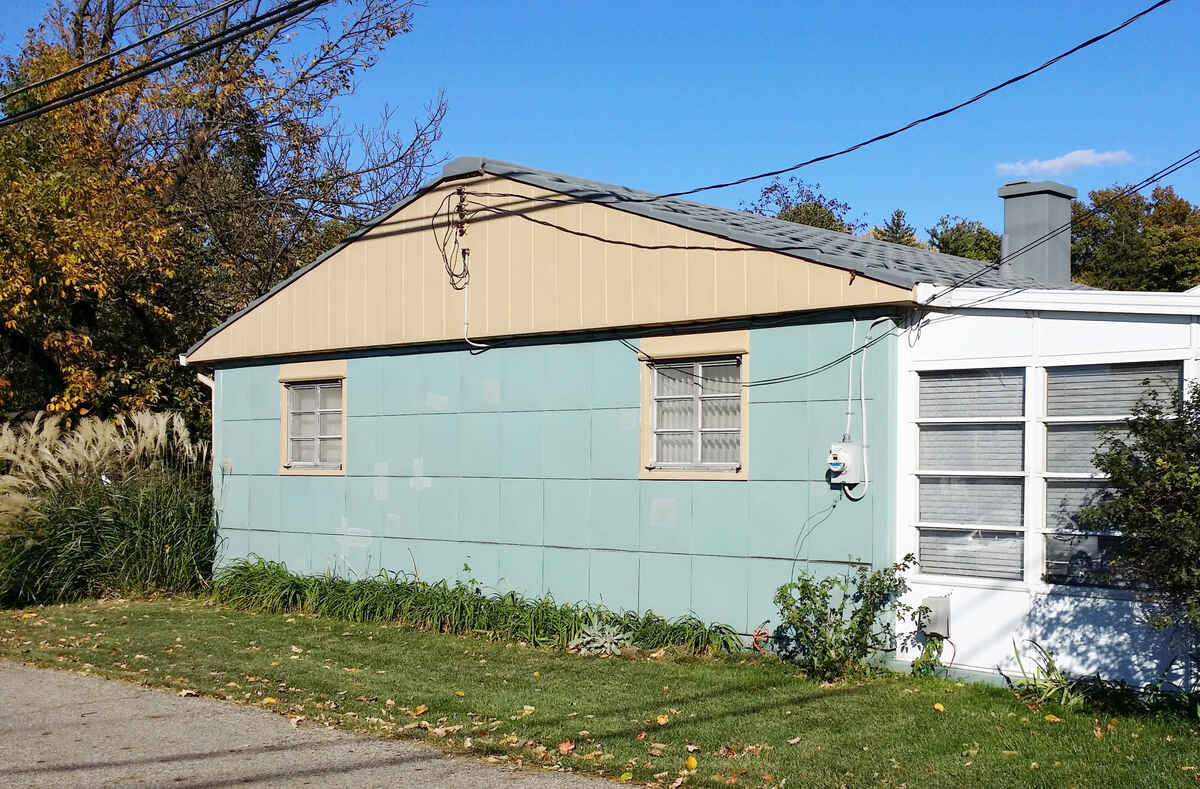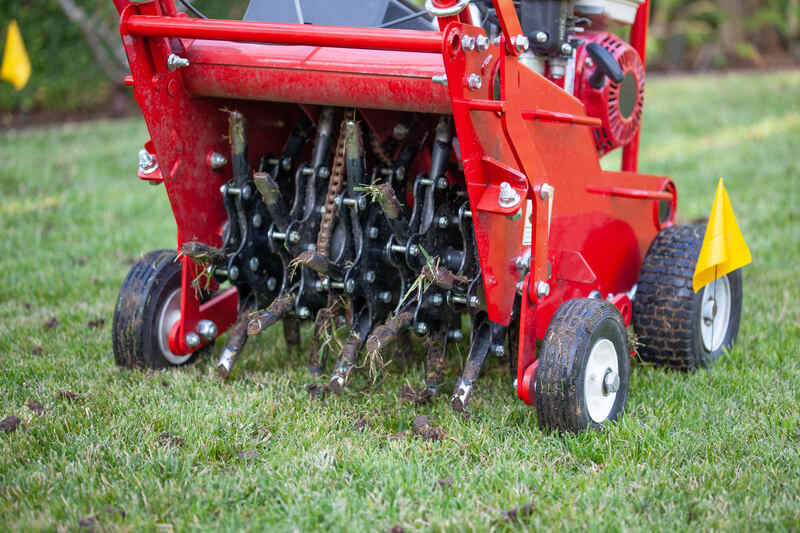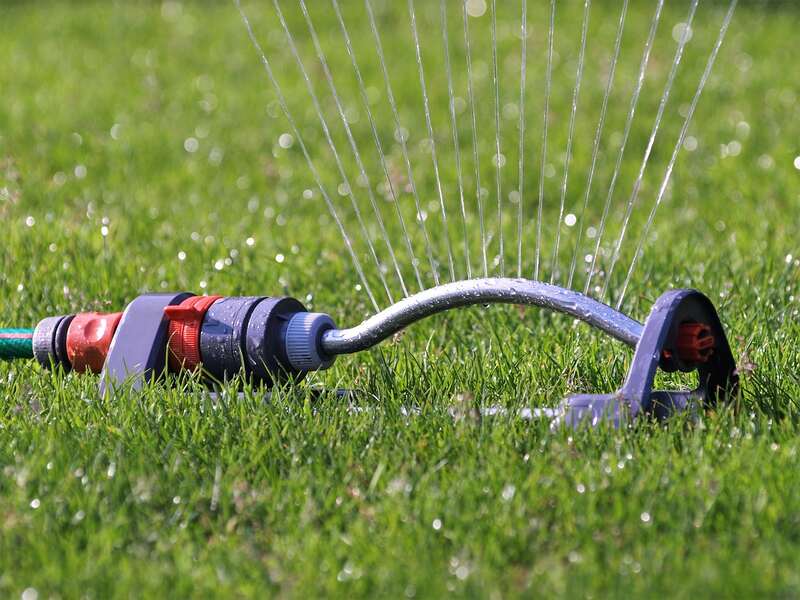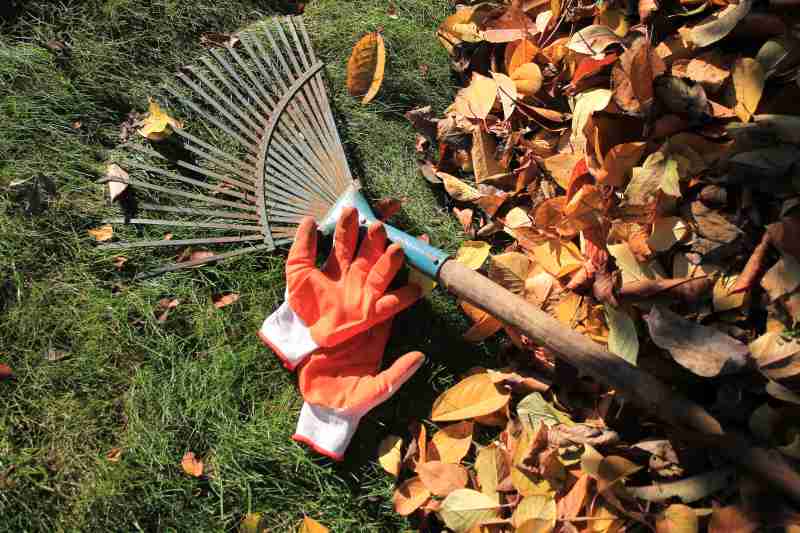
We know that there are certain things that we need to do in the fall to prepare yards around Columbus, Ohio for winter. Even though forecasts have become more accurate, we still wait to see what we get to know what kind of fall and winter we are going to have. We may need to adjust general fall lawn care tips depending on whether fall turns out to be dry or wet. So, here are some of those general tips with ideas about adjusting them to the type of weather Columbus actually gets.
1. Aerate Your Lawn

Photo Credit: Surfin_Rox / Adobe Stock
If we have a hot, dry summer in Columbus, it can bake your lawn until it is hard and the soil is compacted. Our falls can be dry, which compounds the problem. Then, a dry fall can be followed by a winter that alternates between freezing and thawing, which compacts the ground even more. Even if we have a wet fall, the first rains will simply run off if a hot summer has baked the ground. When you aerate your lawn, make sure that plugs are actually being removed. This not only enables water to sink deeper into the ground but also enables the roots of your grass to penetrate deeper in search of the nutrients that will sustain it through the winter.
2. Fertilize Cool-Season Lawns
Lawns of warm-season grasses, such as Bermuda grass and Zoysia, go dormant earlier than cool-season grasses and, for that reason, they should receive their last application of fertilizer early in September. Cool-season grasses, such as Kentucky bluegrass, ryegrass, and fescues, should receive two applications of fertilizer in the fall, one in September and one in late fall.
3. Water Your Lawn

Photo Credit: ariesa66 / Pixabay
During the fall, the blades of grass slow down on growth, but the root system continues to develop. You may have allowed your lawn to go brown and dormant during the heat of the summer, but when temperatures begin to cool, start watering again. Your lawn still needs around an inch of water a week. We may get that much from our normal fall rains, but if we don’t, you’ll need to supplement with watering. Water as you did in the summer. Wait until your grass begins to lose its color and suppleness, and make sure to water in the early morning. Water deeply enough that the water soaks 4 to 6 inches deep into the soil to encourage deep root growth.
Check out his article for more lawn watering tips for Columbus.
4. Overseed a Thinning Lawn
If your lawn has bare spots or looks thin due to traffic-use or stress from the summer, overseed it two to four weeks before the average date of the first frost. Around Columbus, that date falls between October 11th and October 20th.
5. Keep Mowing
You may have stopped mowing if you allowed your lawn to go dormant during a hot, dry patch during the summer or during drought conditions, but when temperatures cool, your lawn will start growing again. Even though the growth will be slower than during the peak growing season, you do need to keep mowing to remove the tips of grass blades that have become damaged to keep your lawn healthy. Of course, don’t remove more than one-third of the blade at a time, but cutting your grass slightly shorter helps it stand upright under the weight of fall leaves and the coming winter’s snows. Aim for a final height of 2 ½ inches, and, if you need to, gradually lower your mower to that height over two or three mowings to avoid cutting off too much of the blade at one time.
6. Remove Leaves and Debris

Photo Credit: Syndy / Adobe Stock
Leaves can mat down under fall rains, creating an entry point for diseases to attack your lawn. Either mulch the leaves and leave them to decay and be absorbed as nutrients, or rake them and add them to your compost. You also should remove fallen branches, twigs, fruits, and nuts. Pay particular attention to removing acorns because they can create bare spots if left lying on your lawn.
7. Protect Your Trees and Shrubs From Winter Weather
While you fertilize your lawn, also give your trees and shrubs a taste of nutrients to sustain them through the winter. In addition, fall, after all of the leaves are down, provides the best time to check your deciduous trees and shrubs for signs of damage, insect infestation, and disease. Damaged, diseased, and infested branches probably will need to be removed, but ask your lawn care expert for recommendations.
Applying an anti-desiccant to evergreen trees and shrubs prevents them from losing moisture through the stomata or pores on the underside of their leaves. During the winter, when the ground is frozen, they are unable to draw sufficient moisture from the soil and draw upon moisture stored in their leaves.
These seven tips will help your lawn, trees, and shrubs survive whatever type winter weather we have in Columbus and greet the spring looking healthy and beautiful.
Have more questions about lawn care? Visit our Columbus lawn care page for more information.
Main Photo Credit: A house in Columbus, OH / Eric Friedebach / Flickr / CC BY 2.0